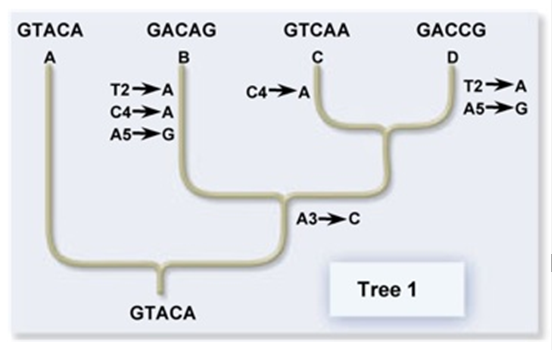Which of the following best describes the kind of resource for which individuals may
A. It will most likely be food or some form of
nutrient.
B. It will most likely be related to space or
shelter.
C. It will most likely be related to
reproduction, such as access to mates.
D. It will most likely be related either to food,
nutrients, space, or shelter.
E. It can be any resource that is limited in the
environment.
E
You might also like to view...
One of the major categories of receptors in the plasma membrane reacts by forming dimers, adding phosphate groups, and then activating relay proteins. Which type does this?
A) G protein-coupled receptors B) ligand-gated ion channels C) steroid receptors D) receptor tyrosine kinases
Use the principle of parsimony and molecular genetic data to choose a phylogenetic tree for your hypothesis of how the species were derived from the ancestor.

A. Tree 1 requires the most mutations therefore it would be the best choice.
B. Tree 2 requires 4 mutations while Tree 1 requires 6 mutations therefore Tree 2 would be the best choice.
C. Tree 2 requires the least mutations, therefore it would be the best choice.
D. Tree 2 requires 5 mutations while Tree 1 requires 7 mutations therefore Tree 2, with the least mutations, would be the best choice.
E. Tree 1 requires 7 mutations and Tree 2 requires 4 mutations, therefore Tree 2 would be the best choice.
Which of the following are considered reservoirs of infection?
A) carriers B) contaminated food and drinking water C) rabid animals D) all of the above
Which of the following statements is NOT true about the flatworms?
a) Liver flukes and blood flukes are parasites in humans only. b) Schistosomiasis is a common human blood disease caused by flukes in tropical areas. c) Tapeworms are hermaphroditic, having both male and female reproductive structures in each proglottid. d) Planaria contain pigmented, photosensitive eyespots. e) tapeworms have a ladder-type nervous system similar to other flatworms.